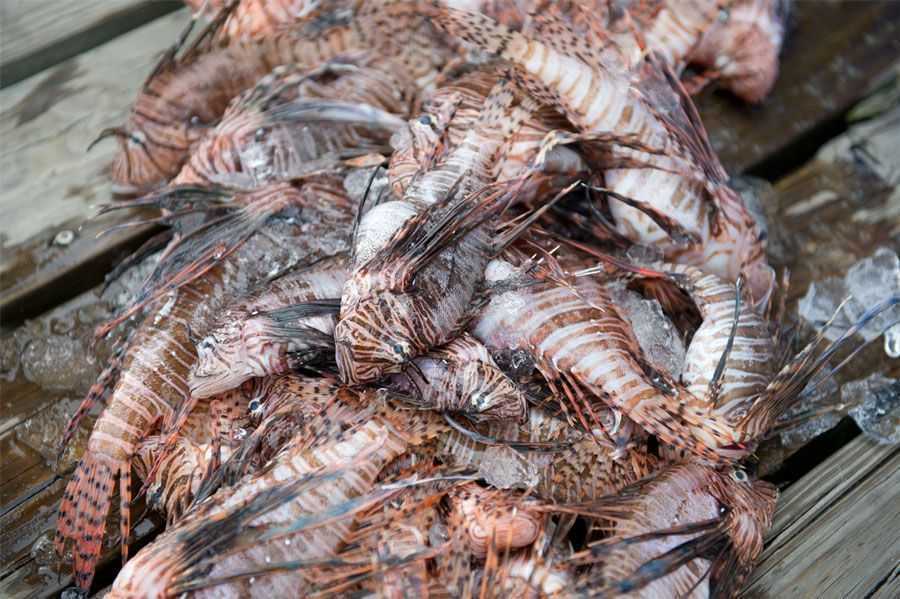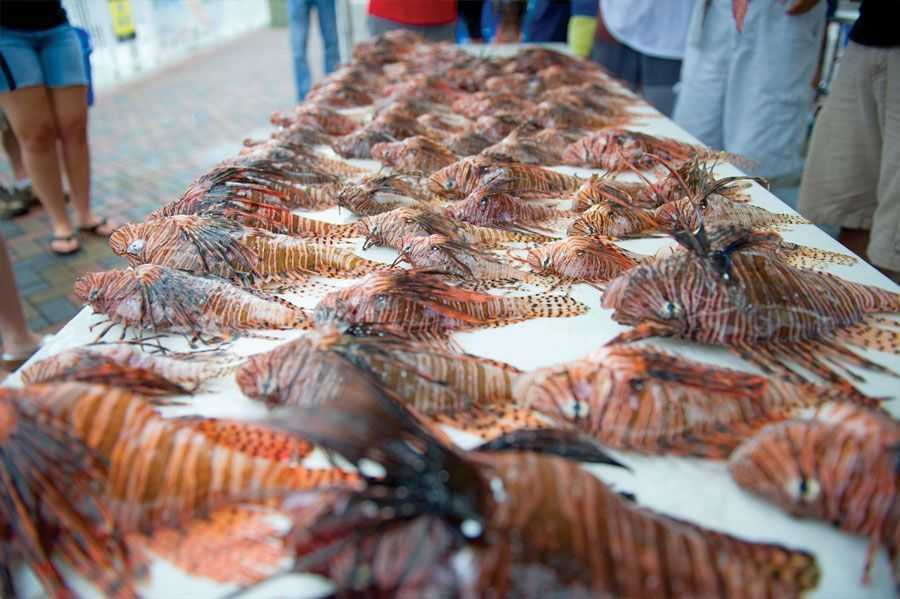The lionfish invasion in Florida’s waters… a brief review and update

The first “official” report of a lionfish in Florida’s waters occurred in 1985 off the Southeast coast. We have also heard of “unofficial” sightings dating back into the 1970s. Most likely a result of many unrelated aquarium owner releases taking place over decades, we are now faced with a booming lionfish population.
It turns out that these guys are not just another pretty aquarium fish. Originally from Indo-Pacific waters, they have adapted well to our Atlantic, Gulf and neighboring Caribbean waters. They are found in waters from 2 to 1000 ft, are able to survive in very low salinities and can tolerate temperatures from the low 50s to the 90s. Females reach sexual maturity in their first year and are capable of producing as many as 20,000 to 30,000 eggs every 4 days. They are voracious feeders capable of reducing local prey by as much as 80%. And, if that is not enough, no natural predator has stepped up yet to regularly consume this spiny, venomous creature. No wonder one scientist described them as:
“Lionfish are in essence a biological pollution, spreading along our coasts, coating our estuaries and reefs, and even seeping down to the depths” (Dr. Pamela J. Schofield, Research Biologist, US Geological Survey, Gainesville, FL).
Divers are becoming aware of the need to remove as many lionfish as possible on their dives. It has become quite a sport. Finally, here is a marine creature we don’t have to feel guilty about removing! New tools have emerged making removals safer and more efficient. Last year FWC declared “Open Season” and made it possible for a diver to remove an unlimited number of lionfish without the need of a Fishing License. Fishing tournaments targeting lionfish are being scheduled throughout the State all year long. Prizes are offered for teams bringing in the “Most”, “Largest” and even the “Smallest” lionfish. If you are interested in participating in one or more of these tournaments, FWC and REEF.org both have websites listing upcoming events.
If you have not tried it yet, I believe that you will find it a very tasty fish! A sweet, mild white meat with a flavor somewhere between flounder and hogfish. Check with your local markets and restaurants. If they do not offer it yet, they should! One way to insure a consistent removal process will be to create a demand in the market place.
We have noted a number of different marine species willing to eat lionfish, but reports of natural predation are few. If I were a betting man, I would put my money on large grouper, snapper and shark species to eventually step up and prey upon lionfish. Until that actually happens, or another predator emerges, let’s all maintain a constant pressure on these invaders and perhaps leave our local potential predators in the ocean.
Report Sightings: nas.er.usgs.gov/sightingreport.aspx
Upcoming Events: http://myfwc.com/fishing/saltwater/recreational/lionfish/events/
